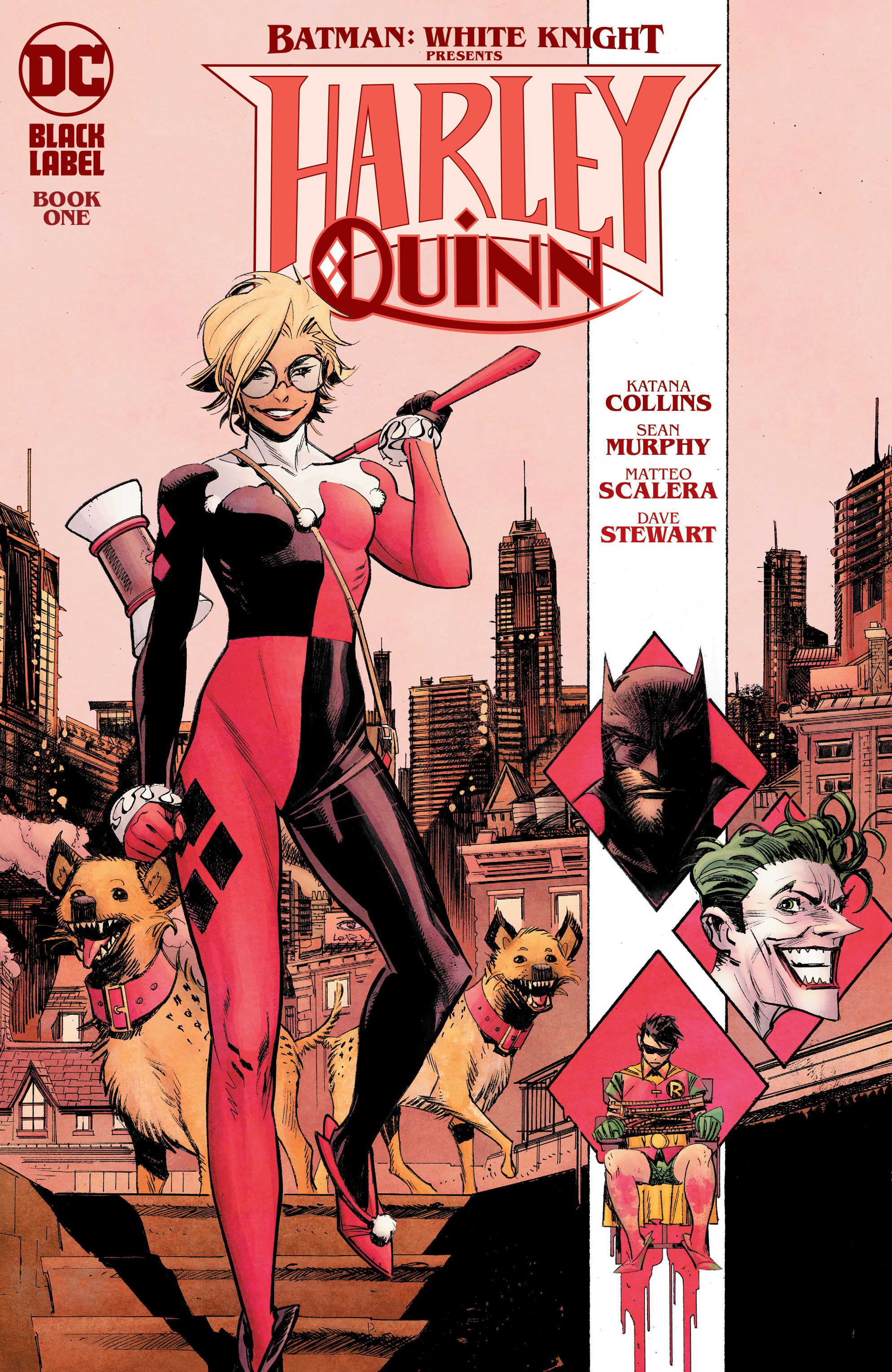Batman: White Knight Presents Harley Quinn #1
- WRITER
- Katana Collins, Sean Murphy
- Artist
- Matteo Scalera
- Letterer
- AndWorld Design
- Cover Artist
- Sean Murphy, Matteo Scalera, Matt Hollingsworth
- Publisher
- DC Comics
- Price
- 4.99
- Release Date
- 2020-10-20
- Colorist
- Dave Stewart
One of the most successful titles published on DC Comics' mature readers-oriented imprint DC Black Label has been Sean Murphy's Batman: White Knight. Set in a vision of Gotham City where the Joker regained his sanity and reclaimed his civilian identity as Jack Napier, consulting detective, with Batman becoming unstable in the face of the Clown Prince of Crime's turn, the emotional core of this alternate universe had been Jack's romantic relationship with Harley Quinn. The latest White Knight miniseries puts the focus on Harley herself as she attempts to pick up the pieces of her life while stepping up to lead a criminal investigation herself.
The latest six-issue miniseries follows the recent Batman: Curse of the White Knight maxi-series, which concluded earlier this year. Two years after Azrael's fateful arrival and subsequent defeat, Harley is left as the single mother of two following Jack's death and Bruce Wayne's imprisonments for his actions as Batman. As Harley recalls the origins of her romance with Jack, she must balance her parenting responsibilities with investigating new villains surfacing in Gotham leading her to flirt with her own inherent darkness once again to defend the city at any cost.
While Murphy co-developed the story, his wife and international bestselling author Katana Collins takes point on the scripting for the miniseries with a clear knack for writing dialogue, seen through interactions between Harley and Jack, in flashback, and between Harley and Bruce. Despite the change in writers, the new story feels very much like a natural continuation that Murphy had crafted in the first two volumes. Collins' gives Harley her just due center stage though, outside of the flashback, the opening issue is a largely low-key affair establishing Harley's current status quo and new mission through two separate conversations. And while Harley manages to keep her cool, for now, the opener hints at all hell breaking loose as she finds herself drawn deeper into the investigation at hand.
Matteo Scalera, with colorist Dave Stewart, manages to evoke Murphy and Matt Hollingsworth's artwork in the first two volumes while making the world and its characters feel all their own. Both Murphy and Scalera share a raw sensibility to their linework and this is particularly evident with their character work. Similarly, Stewart's more earthy, muted color palette here is perfectly in line with Hollingsworth's past work while elevating Scalera's pencils. While there are only teases at big, bombastic action in this opening issue, Scalera has certainly showcased epic set pieces before in his Image Comics series Black Science. Instead, the issue is largely set up, as the art team introduces the key players before building to their crescendo.
While not necessarily beholden to Curse of the White Knight or the original White Knight maxi-series, White Knight's Harley Quinn miniseries certainly benefits if readers have a prior understanding of this alternate continuity's overall premise. Katana Collins adeptly takes the helm with Matteo Scalera to breathe new life and an intriguing future for the world that Sean Murphy created, with several familiar faces confronted with a new threat. With the Joker and Batman both off the board, it now falls on Harley to save the day, and having two children doesn't appear to have slowed her down as she reminds everyone how lethally capable she is in her own right, with Harley poised to unleash her inner demons for the greater good.

